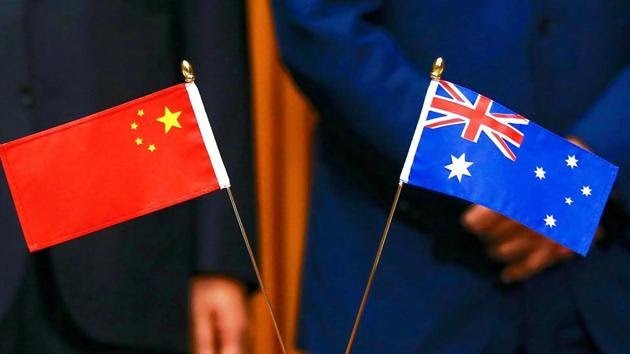
Naval Shipbuilding Plan
In the executive summary of the Defence White Paper 2016, Australia calls US-China relations as the strategically most important factor for the next two decades. The paper recognises Australia’s inability to protect itself independently and needs for ‘strong and deep alliances’ for defence planning.
The white paper talks about the doubling of the submarine fleet to 12 boats, nine new future frigates optimised for anti-submarine warfare and a fleet of 12 offshore patrol vessels. The government intends to achieve this through “an Australian industrial base that is reformed, productive, secure and cost-competitive.”
It aims to ensure a long-term industrial capability to deliver and sustain Australian naval capability in both surface and subsurface vessels through a rolling acquisition programme which would allow long-term planning with the certainty of orders.
In 2016, Australia began the programme to acquire 12 regionally superior submarines (Shortfin Barracuda), now being replaced with the AUKUS nuclear submarine initiative. The construction of the first submarine was to start in 2022–23 and enter service in the early 2030s. As per the plan construction would extend into the late 2040s with the last of the 12 boats to join the navy in the early 2050s.
According to the Naval Shipbuilding Plan 2020, Australia’s “maritime strategy are (sic) capable surface naval forces able to provide combat power at and from the sea and, through their inherent versatility and flexibility, contribute to a myriad of tasks required across the spectrum of conflict border protection and anti-piracy patrols, through to high-intensity warfighting including naval surface, air and subsurface warfare and amphibious operations.”
Major Naval Vessels Acquisition Plan (Defence White Paper, 2016)
- Key elements of new naval capability will include 12 major surface vessels. The three Hobart Class Air Warfare Destroyers are to enter into service in the early 2020s will provide Australian or coalition maritime task groups with defence against air and missile attacks. The Hobart Class vessels will be equipped with new advanced surface-to-air missiles to enter service by the middle of the next decade. Nine new frigates optimised for anti-submarine warfare will be enter service from the late 2020s to replace the existing fleet of eight Anzac Class frigates, with construction to start in 2020.
- The Government will acquire 12 new offshore patrol vessels that will provide greater reach, endurance and several different roles than the existing Armidale Class patrol boat fleet. All 12 offshore patrol vessels will be delivered by 2030. The Armidale Class will be supplemented by additional patrol craft as required until they are replaced by the offshore patrol vessels, to ensure there is no gap in the Navy’s border protection capability.
- The life of four of the current Huon Class mine hunters will be extended while new technologies are developed to counter the threat of maritime mines.
- Eight P-8A Poseidon maritime surveillance and response aircraft will be introduced in the early 2020s, with seven additional aircraft to be acquired in two tranches to bring the total to 15 aircraft by the late 2020s.
- Australia will acquire seven high altitude MQ-4C Triton unmanned aircraft from the early 2020s as part of the Intelligence, Surveillance and Reconnaissance capability stream.
- New deployable short-range ground-based air defence weapons will enter service by the early 2020s to replace the existing RBS-70 system. New medium-range ground-based air defence weapons will be acquired in the mid to late 2020s to help protect valuable assets, including airfields and command centres.
- Australia’s amphibious capabilities will be centred on the two Canberra Class large amphibious ships, HMAS Canberra and HMAS Adelaide, and enhanced amphibious capabilities. The Canberra Class provides the ADF with the capability to undertake a range of operations, including supporting the security of South East Asia and Pacific Island Countries and addressing emergent threats in the broader Indo-Pacific region.
Given the above acquisitions, the Australian Navy will be an extremely potent blue water navy with the ability to operate in the extended maritime neighbourhood.
The probable Future
The AUKUS has not been welcomed by the ASEAN countries. There is sense of caution among the nations of South East Asian region. The ASEAN-China bilateral trade in last three decades has increased by 85 times. The two sides have mutually invested over USD 300 billion. The ASEAN is also a major trade partner of the USA and remains critical to the success of its Indo-Pacific strategy. They can play a significant role in the containment of China. Any strategic move which jeopardises ASEAN stability and security will also compromise the AUKUS Indo-Pacific strategy.
Answering the concerns of ASEAN nations, in a joint op-ed UK, US and Australia said they “are committed to supporting a region that places ASEAN at its centre and which aligns with the ASEAN Outlook on the Indo-Pacific. All members of AUKUS are ASEAN Dialogue Partners, and all are committed to complementing and strengthening the existing inclusive ASEAN-led regional architecture. AUKUS will also complement our networks of regional bilateral and minilateral partnerships in promoting regional peace, security, and prosperity.”
“We want to ensure that all nations in the region have the strategic space to make decisions in their sovereign interests,” it added.
The announcement of AUKUS is seen as a coming together of Anglo-Saxon powers to fight a future war with China. The Pacific of today is way different from the Pacific of the 1940s when the western allies fought Japanese colonial expansionism. The nations that are now ASEAN members were under Japanese occupations and Japan was exploiting their resources for its industrial military production. Japan is a chain of narrow islands with limitations in living space and resources. In a way it is very similar to the United Kingdom. But unlike the UK at that time it didn’t have the technological superiority to control a massive and resourceful nation like India to sustain a global empire. The British Empire is an aberration in human history.
After the defeat of the Japanese Navy in the Battle of Midway (June, 1942), the conquest of Japan was certain. The Hawaii naval base played a central role in the naval success of the US in the WWII. In case a similar situation arises, for which AUKUS and Quad have been formed, China will replace Japan. Given the resources, military, technological, economic and industrial capability of China, Western allies would require more than Hawaii as a secure platform in the Pacific and Australia fits the bill perfectly.
China is the factory of the world. Its military follows its economy; not the other way round. AUKUS and other world powers understand this. There is still time before Beijing becomes unstoppable given its plans to developi futuristic weapons. China is leading the world in some of the emerging dual use technologies.
For all practical purposes, China is an Island with Russian Siberia in the north while the sparsely populated Central Asian republics and Tibetan plateau are not easily reachable areas for any army from overseas. This leaves the coast as the only vulnerable target.
This is where Australia comes into play. It is a developed economy and largely self-sufficient. With its population concentrated in the far away southern coast, besides long-range surface-surface missiles, it is difficult from China to hit its population and industrial centres. The sparsely populated northern areas of Australia are well suited for military bases given their close proximity to South China Sea nations like Vietnam, Indonesia and the Philippines. Australia has an economy that can sustain large scale military expansion, especially, in the domain of strategic weapons like SSBN, SSN, Missiles and Naval Ships.
With the announcement of the nuclear submarine programme for Australia, in the coming years, nuclear weapons are again going to be at the core of military planning. The shift of the global focus from nuclear to cyber warfare as a means to destroy national capacity may be reversed. This will be a reversal from soft kill to hard kill.
The naval expansion plan of Australia is tailor-made for dominance and strike capability in the South China Sea. The investment in the Maritime and Space sectors accounts for almost half of the defence modernisation plan of Australia. This precisely means that the country’s intent is aggressive, not defensive.






Add comment